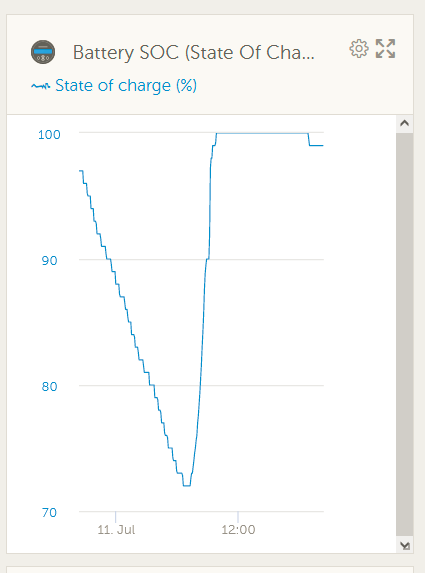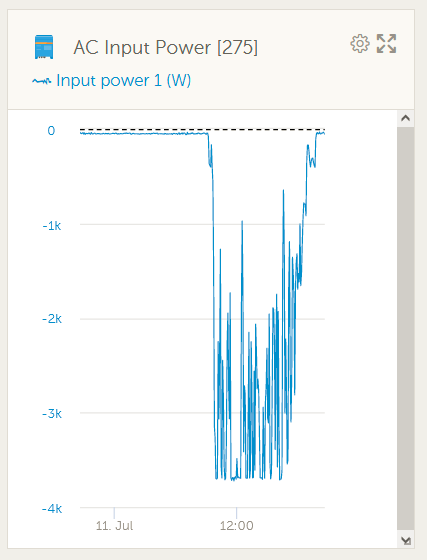Hello, I'm going to explain my problem to you. I have an installation made up of panels with 4kwp in three strings that go to a Victron 250/100 Mppt, a Victron Multiplus II 48/5000/70 inverter, 2 Pylontech US 5000 batteries with a total of 9.6 kw and I do grid injection. The issue is that while the batteries are below 99% there is a parameter that sets CCL charging current limit and its value is 160 amps but when it reaches 99% that value changes to 40 amps and does not allow the panels to perform any more. of 2.7 kwp although previously they were at 3.7 kwp. But also on these hot days the battery is set to 34 degrees and that parameter drops to 30 amps and even slows down the panels more and leaves them with a maximum of 2.5 kwp. Could someone shed a little light on this matter and give me a hand? The idea is to charge an electric car in the future and with this move it will be impossible for me.
Thank you very much in advance, greetings



